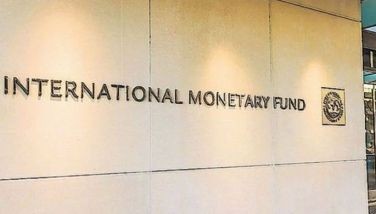Red flags and vital signs

HR: 57 BP: 110/70 RR:18 Temp: 36.4 This information is sent to me through our CG (group chat), which monitors the patient’s condition. These are called vital signs. Vital signs are critical indicators of a patient’s essential body functions and are routinely observed in hospitals to assess and track a patient’s health status.
As I conduct training needs analyses with HR chiefs of different companies and industries, the typical finding is that staying abreast of rapid changes and demands in today’s fast-paced business world can be challenging, and effective leadership plays a crucial role. However, not all leaders succeed in meeting expectations. Let’s delve into why some leaders fall short and explore the detrimental impact of poor leadership on their teams and organizations.
In business parlance, we may call these “red flags.” However, in today’s column, I prefer to call them negative vital signs, indicating potential trouble brewing that would be detrimental to business organizations.
If you want to see bad leadership in action, then pay close attention to the negative vital and warning signs.
Absence and lack of strategic vision and planning
Some leaders dive into their roles without a clear game plan, setting unclear goals, mismanaging resources, or focusing too much on immediate gains rather than long-term success. Effective planning and setting clear, achievable goals can steer the organization in the right direction, ensuring sustainable growth and success.
Resistant to adaption and learning
Leaders need to keep up. Those who resist learning new things or adapting to changes quickly become outdated. Embracing continuous learning and being open to feedback is essential for staying relevant and leading teams effectively. A commitment to personal and professional growth can drive innovation and maintain competitive advantage.
Inadequate talent management
Great teams are built by leaders who can attract, retain, and develop talent. Poor leaders often face high turnover rates, underperforming teams, and a lack of future leaders. Effective talent management involves creating a robust, resilient team to take the business to new heights. This requires investment in employee development and a commitment to recognizing and nurturing potential.
Stifling innovation
In my seminars, I would proclaim that the six most expensive words for business are: “We’ve always done it that way.”
Sticking to the same old ways can hold a company back when the business landscape has changed dramatically. Leaders who resist new ideas and don’t encourage creativity stifle progress. Embracing innovation and being open to fresh approaches can help the organization stay ahead of the curve and adapt to new opportunities, fostering a culture of continuous improvement and growth.
People are treated like numbers and furniture
In top-down power structures, employees are often treated as mere objects or expenses rather than valuable assets, or like furniture that these inadequate leaders can replace at any time. This lack of concern for their well-being stems from a focus on productivity and profit. Such environments often lead to high stress levels, high turnover, absenteeism, and burnout. Compassion and empathy from leaders can transform this dynamic, fostering a more motivated and committed workforce.
Too much ego
Leaders exhibiting “hubristic pride” tend to be narcissistic, reflecting feelings of arrogance, grandiosity, and superiority. They often experience more interpersonal conflicts and are prone to shame. These traits can significantly harm businesses. Typical outcomes of leaders with excessive ego include:
Taking credit for others’ work, which distances them from their team.
Exaggerating stories and accomplishments, resulting in distrust.
Feeling entitled to special treatment due to their position or title.
Lacking accountability and failing to practice active and respectful listening.
Ethical lapses
Leaders who engage in unethical behavior can cause serious harm to their organization. When questionable decisions are made for financial gain or personal benefit, employees are keenly aware, leading to a loss of respect. Leading by example and showing integrity in decision-making are crucial for maintaining trust and setting a positive tone for the organization.
Embezzlement, siphoning company resources, and rechanneling them into their pockets are practices that can have severe repercussions for both the organization and its people, impacting financial stability, trust, morale, and overall organizational health.
If you look at the list of warning signs here, you can categorize them into two:
Either your leaders slip up because of competence issues, so you need to retrain, retool, and reskill them. There is hope on the horizon.
The other category involves character issues. Now, that cannot be addressed by retraining. You need to remove them from your organizations because they do the most harm.
Watch out for these vital and warning signs. Ignoring the warning signs today can lead to inevitable crises tomorrow.
(Francis Kong’s “Inspiring Excellence” podcast is now available on Spotify, Apple, Google, or other podcast streaming platforms).
- Latest
- Trending





























